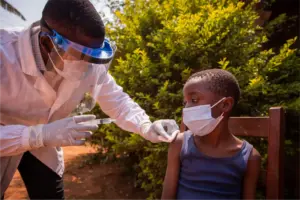
Over the past decade, advancements in prostate cancer treatment have significantly expanded therapeutic options, yet the question remains: Which drugs and strategies work best, and when should they be used?
The Expanding Arsenal of Treatments
For advanced prostate cancer, clinicians now have access to a range of therapies, including:
Second-generation hormone therapies (ARPIs): Abiraterone, enzalutamide, apalutamide, and darolutamide
Chemotherapy agents: Docetaxel and cabazitaxel
Radiopharmaceuticals: Radium-223 and lutetium-177-PSMA-617
PARP inhibitors: Olaparib, rucaparib, niraparib, and talazoparib
A therapeutic vaccine: Sipuleucel-T
These treatments can delay disease progression and prolong life, but their sequencing and combination for optimal outcomes remain subjects of ongoing debate.
Triplet vs. Doublet Therapies
Recent studies highlight the potential of triplet therapies (e.g., androgen deprivation therapy [ADT] combined with chemotherapy and ARPIs) for managing metastatic hormone-sensitive prostate cancer (mHSPC).
A 2024 meta-analysis in the Asian Journal of Andrology identified darolutamide plus docetaxel and ADT as the most effective triplet therapy for improving overall survival and reducing castration-resistant disease risks.
However, for low-volume mHSPC, evidence suggests that doublet therapies (e.g., ADT with an ARPI) may be just as effective as triplet approaches.
Chemotherapy’s Role in Treatment
For metastatic castration-resistant prostate cancer (mCRPC), recent findings challenge traditional approaches:
Chemotherapy, particularly cabazitaxel and docetaxel, outperformed ARPIs like abiraterone and enzalutamide in reducing mortality risk, according to a 2024 analysis published in Frontiers in Oncology.
Despite these results, real-world clinical practice continues to favor ARPIs as the first-line treatment due to better tolerability and patient preferences.
Emerging Insights and Trends
Innovations in diagnostics and precision medicine are shaping prostate cancer treatment strategies:
Genomic testing: Identifying mutations in genes like BRCA1/2 can guide the use of targeted therapies like PARP inhibitors.
PSMA PET imaging: This advanced imaging technique helps detect metastases earlier, aiding treatment decisions for therapies like lutetium-177-PSMA-617.
Challenges in Clinical Adoption
Despite growing evidence and established guidelines, the adoption of novel therapies remains inconsistent:








